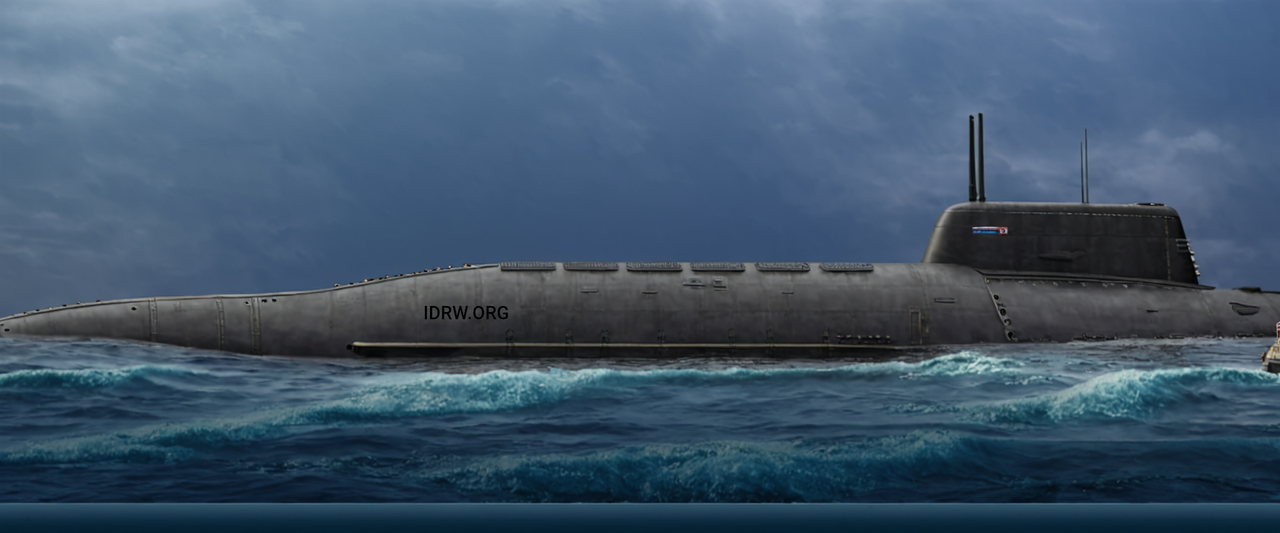SOURCE: AFI

India’s upcoming S5-class of ballistic missile submarines (SSBNs) represents a significant leap in the country’s strategic defense capabilities, potentially altering the global balance of nuclear power. With an estimated displacement of over 13,000 tons, a planned arsenal of intercontinental ballistic missiles (ICBMs), and enhanced stealth capabilities, the S5-class could not only augment India’s nuclear deterrent but also cause strategic concerns for the United States and Europe. This SSBN program signals India’s advancement towards securing a robust and survivable second-strike capability, strengthening its position as a global military power—a development that comes with complex implications for Western nations.
The S5-class submarines are set to be India’s most advanced and powerful SSBNs, enabling a full-fledged sea-based nuclear deterrent as the apex of India’s nuclear triad. Unlike the current Arihant-class SSBNs with a range limitation of their ballistic missiles, the S5-class is expected to deploy longer-range ICBMs like the K-6, giving India the capacity to strike distant targets, including potential adversaries located thousands of kilometers away. This capability extends India’s nuclear reach, pushing the country closer to strategic parity with established nuclear powers.
For the U.S. and European nations, this shift can introduce complexities to regional and global nuclear deterrence frameworks. The S5-class will allow India to deploy nuclear assets far from its shores, making detection and neutralization challenging, even for the most advanced anti-submarine warfare (ASW) technologies in use by NATO forces. The unpredictability of sea-based nuclear assets, along with extended reach, can increase the strategic ambiguity that the U.S. and its allies have to account for in their own military planning.
The S5-class program may introduce SSBNs capable of launching ballistic missiles with a range of up to 8,000–12,000 kilometers. This means India could, in theory, target locations far beyond Asia, including key strategic areas in Europe and potentially even the U.S. The development could encourage India to keep a portion of its SSBNs on patrol at all times, further enhancing the credibility of its second-strike capability.
For Western nations, especially those invested in the Indo-Pacific region, the S5-class signals India’s enhanced influence and reach beyond regional borders. While India has historically maintained a No First Use (NFU) policy for its nuclear weapons, the S5-class SSBNs represent a potent deterrent that could complicate nuclear security calculations, particularly in scenarios where India perceives its nuclear interests or allies to be under threat.
India has steadily fortified its presence in the Indian Ocean Region (IOR) as it positions itself as a net security provider, aiming to prevent other nations from using the region as a base for power projection. The S5-class bolsters India’s ambitions to dominate the IOR by enhancing its strategic reach and allowing India to defend its vast maritime interests more credibly.
For the U.S. and Europe, this move complicates access and control in a region traditionally influenced by Western naval powers. The presence of SSBNs with intercontinental capabilities creates a regional deterrent shield that could give India leverage over other naval forces, ensuring its dominance within the IOR and curbing the operational flexibility of non-resident military powers.
The S5 program also highlights India’s quest for self-reliance in defense, which is reshaping its global partnerships. While India maintains close ties with the U.S., France, and the UK for military acquisitions and technology, the indigenous nature of the S5-class, with minimal foreign dependency, demonstrates India’s ability to develop sophisticated nuclear systems on its own. The rise of a self-sufficient, nuclear-armed India may spur reactions from U.S. and European policymakers, who are keen to see India as a counterbalance in Asia without necessarily becoming a fully independent power with influence that could stretch into Western regions.
While the S5-class is primarily a response to perceived threats from China and Pakistan, its deployment could shift the broader nuclear stability of Asia. The U.S. and Europe have historically supported India’s role as a stabilizing force in the region, but the S5-class may change the nuclear dynamics of South Asia, potentially prompting Pakistan and China to reassess their own nuclear strategies and capabilities.
The S5-class is expected to incorporate advanced stealth features, likely integrating quieting technologies, such as acoustic damping, low-frequency sonar evasion, and hydrodynamic designs that will make detection challenging even for advanced ASW assets. This poses a unique challenge to Western ASW forces, as tracking SSBNs, especially those with deep-diving capabilities and extended endurance, requires highly specialized and costly resources.
The SSBN’s stealth capabilities complicate ASW operations, rendering it difficult for Western militaries to detect, track, and neutralize these submarines if needed. This raises the stakes in scenarios of strategic tension, as Western navies would face difficulties in effectively countering or monitoring India’s SSBN fleet.